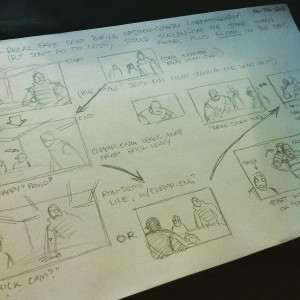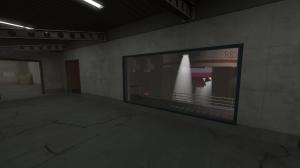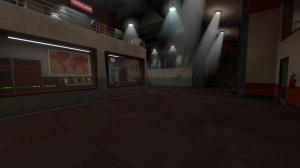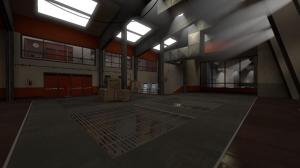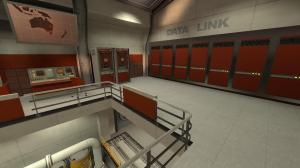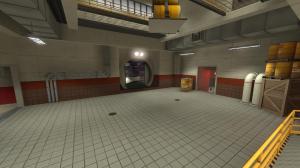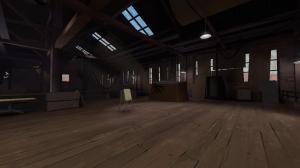Feature Animation Performance
Just a bit of a preamble: This is a collection of notes I took from a presentation given by Ted Ty, an experienced Dreamworks animator with many great feature films under his belt, back in 2014(!) – The pages I’ve written them on are getting quite faded, so what better way to keep them alive is to share them.
- Body mechanics for performance! Even in shots that don’t show the character’s entire body, animate it! If you want accurate believable movement, you have to make sure that off-screen is natural and is alive. Don’t “puppet show” your character. Mike Sez: Also this helps with those last-minute shot changes/adjustments.
- Plan, plan, plan – thumbnail ALL of your work. Do not ever start animating without a solid plan of what you’re doing.
- Dreamworks uses Motion Capture to block in the layout, including the camera rig – this saves massive amounts of time on shot composition & timing/duration/camera moves, as well as provides reference for the animators.
- Speaking of Reference – Reference is NOT cheating!
- When filming your reference/motion capture, do try to do the following:
- 10 takes of how you think you want it
- 10 takes of “What-if” experimentation
- 10 takes of your friends/coworkers – you may be surprised!
- Film the voice actors as they give their performance – include their body/hands
- Shooting reference of your friends and coworkers will bring new insight to possible takes and acting choices, plus it helps minimize your own personality quirks from showing up often in your work.
- Blocking your poses and key frames: Your goal is CLARITY of communication! The viewer shouldn’t be struggling to figure out what your character is doing at the keys stage.
- Acting with Emotions: You cannot skip the REASON for the emotion; your planning of the animation needs to consider what choices you are making for the character in the context of your animation.
- The point is not simply “how far can you push a pose” – you have to have a reason.
- Knowing who your character is in the story allows you to be more specific, more direct on how to project that identity & the character’s intentions.
- Very few motions/actions are done without a thought or motivation behind it. Never move just for movement’s sake.
- Exercise the self-discipline and self-control to animate ONLY what’s needed for the shot, and not blow past what’s needed to sell the story’s progression.
- If the animator doesn’t plan, and/or is uncertain about their work, it will show in their work as a lack of accuracy, a lack of genuine energy, and a lack of conviction/intent behind the movement.
- Speed is the enemy of animating acting shots. You can’t rush life. Ted Ty references the following quote:
“You sit and you dwell and you wait and you read and you think and you meditate. It takes time to think and ponder, and the work is never done because it just continues. It’s looking for evidence of things.”
– Tom Hardy
- Bad acting can also arise from unclear or inconsistent direction.
- Doing too much in too little time – “Hit. Every. Note. Possible.”
- Enthusiasm (over-abundance) can blind objectivity/critical judgement, and lose sight of the overall big picture, the flow of the story.
- Shooting acting reference: When shooting your video reference, take the time to do the “As-If” exercise…
- Do or say it neutrally first.
- …But how would it go “Happily?”
- …Or as if you were confused?
- …As if your computer just crashed, losing your work?
- …As if you had a great morning and a lucky streak?
- …As if the flu was setting in fast?
- …And so on.
- You can even include your consideration & thought process as part of your acting video reference – a spring-board to trigger the reaction.
- If a given situation isn’t lending itself to visualization, then try to think of another situation that has the desired reaction.
- For example, instead of your PC crashing but finding out your work is safe, try when your oft-late friend arrives early for a change.
- Body language, hand poses, finger gestures can be powerful symbols, but if used carelessly, it can totally screw up your shot.
- Watch out for cross-over/repeating the same quirks across different characters! Mike sez: I call this ‘Jeff Goldblum’ or ‘Matthew Perry’ – always playing the same personality quirks in every film/show
Finding the acting spark in a given shot, through planning, filming reference, pre-thought, will make even drudge work more rewarding & satisfying to do.
Good animation is technical; Great animation FEELS great!
- The emotion of the mouth shape is FAR more important than perfect lip synced dialogue. Mike sez: Humans are LAZY. We mumble and mush – we do not enunciate every single phoneme nor syllable.
- The EYES by far tell the most about the emotions going on in your character.
Thanks to Ted Ty for giving this talk, and I hope that his words inspire you to push yourself to higher heights of your animation skill. Remember: you have to work on the stuff you’re not strong in – discomfort means you’re learning!

